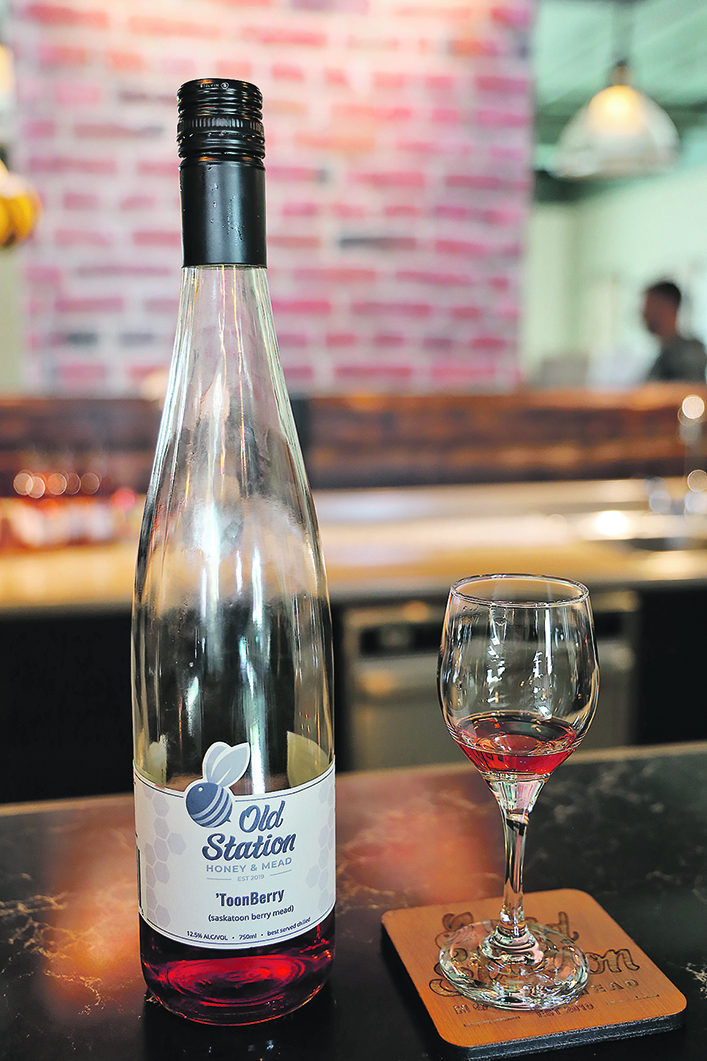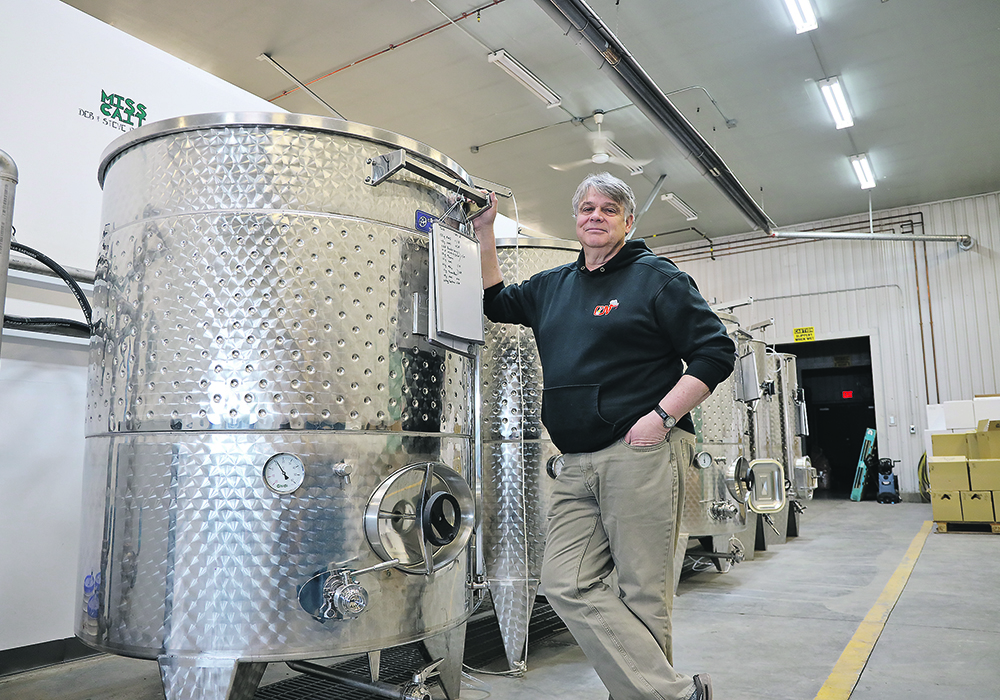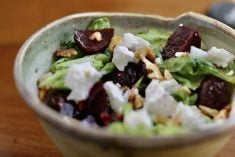A beekeeping hobby develops into a commercial operation supported by a greenhouse and the surrounding community
NEW SAREPTA, Alta. — What began as a calming hobby for Will Munsey has led to community connections, a new business and delicious mead.
Munsey began with two beehives and slowly expanded to 12. To deal with the sweet success of his hobby, he needed a use for the excess honey and made his first batch of mead.
“At the back of my mind I thought I would like to do something on my own land. I was making mead and giving it away. I had no intention of becoming a mead maker,” said Munsey at his new Old Station Honey and Mead in New Sarepta.
He experimented with recipes, gave away bottles of mead and created new recipes for honey and for the fruit he and his wife, Mika, grow at New Sarepta Gardens greenhouse and saskatoon berry farm.
In 2019, Munsey leased the old fire station building from Leduc County after a new fire hall was built next door. He convinced the councillors that visitors needed a reason to turn off the highway and drive into New Sarepta.
“We have nothing here. A hairdresser and a small store. There is nothing new and interesting, and mead is interesting. This is good for the community, it is good for business, it is agritourism that will bring people off the highway and add some variety for New Sarepta,” he said.
The old firehall training room has been transformed into a tasting room with the potential to offer food and snacks to visitors. The old fire truck bays are packed with boxes of mead, shiny steel vessels, a bottling area and a new community space.
The community space has been booked for a small wedding and was already host to a paint night. This spring Munsey hopes the New Sarepta high school graduates and their families will sip a glass of mead instead of drifting away after the ceremonies.
“We can put the junior band in here and open the door and have a cacophony of noise.”
Once he received the appropriate permissions from government liquor agencies and the county, Munsey hired a Nova Scotia wine consultant to help him design the facility and order the specialized equipment. Eventually, they hope to make 1,000 bottles of mead per week.
Next, Munsey reached out to family, friends and neighbours to help fund his new business. Small donors are recognized on a wall of fame. Others donated $400 to name the mead vessels, a move that also gains them a bottle of mead from all future batches.
Two varieties are already named in honour of people who have died.
“These mean something to me,” said Munsey.
The vessel Harrison’s Orange Jacket was named by a school friend who won a lottery, liked what Munsey was doing and needed a place to donate money. The vessel name honours a mutual friend, Harrison, who always wore an orange jacket.
When Munsey asked the community for rhubarb for a new mead, more than 900 pounds were dropped off at the station. Bags of rhubarb hung from the door when he arrived in the morning. One person donated 100 lb. already washed and cut.
In recognition of the donations, the mead was named The People’s Barb.

The sparkling Ministic mead is named after the local Ministik bird sanctuary. Miquelon is made with raspberries and is named after the nearby Miquelon Provincial Park. Tire and Girdle is named after the former Edmonton Journal cartoonist Yardley Jones’ fictitious New Sarepta business the Tire and Girdle Factory.
In his old, smaller vessels, Munsey makes experimental batches of mead that one day may be made in the larger vessels. He is now experimenting with mead made from tomatoes and another from the leaves of a Japanese herb plant called Shiso.
“When I drink that, I know there is something I can do with that. I am not sure what it is yet. We are still four or five months away from doing something.”
The experiment with Shiso is influenced by Munsey and his wife’s time in Japan and Hong Kong. For 15 years Munsey lived in Japan, met Mika, and began a family. After five years in Hong Kong, living on the 19th floor of an apartment building, the family believed their future was in Canada.
In 2006, they bought a small berry farm with an old greenhouse and an old house.
“We loved it. We didn’t know anything about growing flowers, but my grandparents in Edson had a greenhouse and my mom helped us. I didn’t know a petunia from a daffodil. Mika just took to it. She just loves it.”
Now, 18 years later, they have started the next step in making mead and developing an agritrourism location.
“We’re in for an adventure. The building of it is taking longer than I dreamed and is more expensive than I dreamed, but perhaps more exciting than I hoped.”















